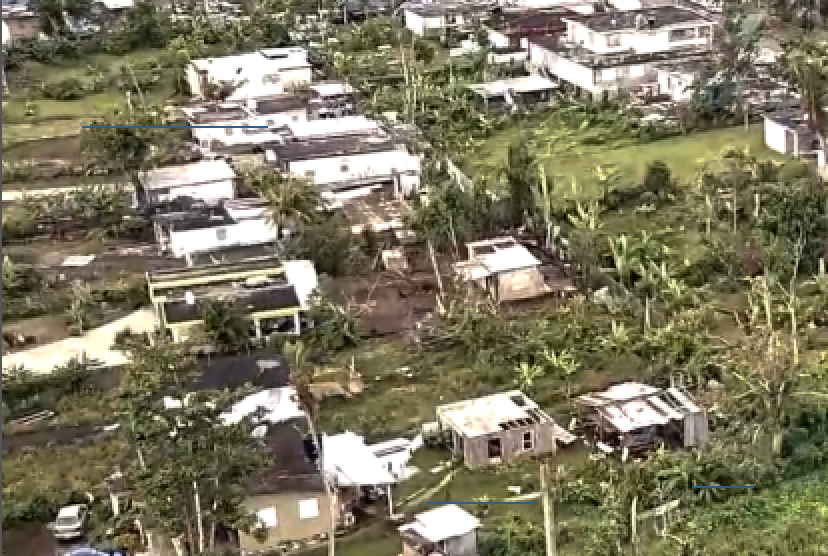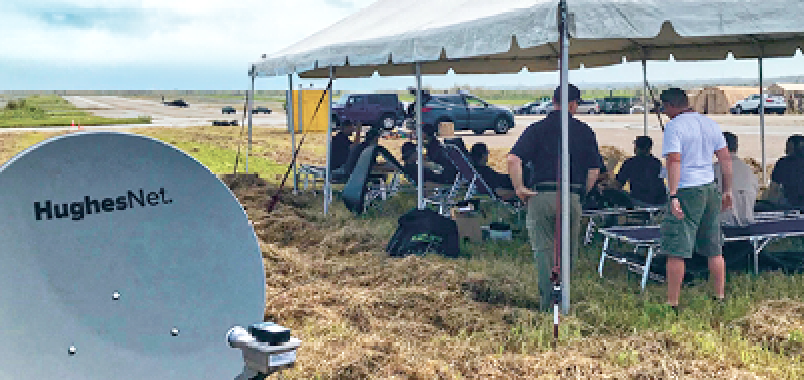After a record-breaking hurricane season in 2020, forecasters warn Americans to brace for yet another active, above-normal season this year. For government agencies coping with ongoing pandemic response amid the accelerating number and intensity of storms, this forecast is a call-to-action for emergency preparation and, as society has become so dependent on connectivity, a sobering reminder to shore up communications networks for whatever may come next.

For decades, satellite technology has been the go-to connectivity solution in disaster response, ensuring first responders and communities can communicate when land-based networks fail.
However, in an increasingly network-dependent world amid the threat of natural and man-made disasters, satellite systems at the ready may not be enough. In fact, as in commercial enterprise, path-diverse communications that include both terrestrial and non-terrestrial broadband enable businesses and governments to serve end users seamlessly in a wide range of scenarios, both planned and unexpected.
Satellite To The Rescue
It’s no secret that, compared to land-based networks, satellite technology is considerably less susceptible to outages in times of disaster. From Hurricane Sandy to Typhoon Haiyan, when wireline connections were wiped out, satellite VSATs came to the rescue, enabling first responders, government and citizens to access critical information and supplies.
In fact, many state and local governments and federal agencies, such as the Federal Emergency Management Agency (FEMA) in the U.S., will pre-purchase VSAT terminals and satellite service in preparation for storm season as a safety measure. They may contract to have the equipment and capacity available ondemand or even pre-stage the VSATs near disaster-prone communities or along the predicted path of a coming storm.
Purchasing service and equipment early provides governments with the flexibility to engage satellite capabilities quickly to get online in the immediate aftermath of a storm. Similarly, many businesses utilize satellite as an ancillary, secondary or tertiary back-up network to ensure their locations stay online, even in times of natural or man-made disaster.
The value of satellite to connect business quickly was on full display in the aftermath of Hurricane Maria in Puerto Rico, enabling medical facilities and pharmacies to provide essential care to citizens.
As a matter of good business, major drug store and grocery store chains across the U.S. use satellite to back-up their networks. These networks can switch seamlessly to satellite broadband when necessary — ensuring customers can receive their vital prescriptions or medicine, have access to clean water and purchase groceries. Plus, 40,000 ATMs across India depend on VSAT connectivity from Hughes for primary service — extending financial access to people who live in places beyond the reach of cable and fiber.
Beyond natural disaster response, satellite connectivity also allows governments and businesses to maintain essential operations when their primary broadband connection at a site or in the region fails.
In example, in 2020, amidst election season, a severed fiber optic cable shut down the state of Virginia’s voter registration system, causing massive complaints that exacerbated voter fraud concerns. Investing in a satellite back-up solution would have enabled the state to continue its registration operations seamlessly despite the terrestrial outage.

Multi-Transport Solutions
In addition to back-up systems, investing in a strategic and reliable, path-diverse, communication networks with satellite transport can guard against communications failure and supply first responders and essential businesses with the connectivity they need.
In an age when connectivity is as essential as electricity, governments and businesses alike increasingly depend on multi-transport network diversity to build resiliency and redundancy. Multi-transport solutions that use satellite and another form of connectivity keep mission-critical applications online when a disruption — be it a storm or fiber cut — compromises terrestrial connections.
One such multi-transport solution is a combined satellite/cellular “bubble,” ideal for on-demand connectivity when terrestrial networks are compromised or don’t exist. With a cellular pack and portable satellite antenna, first responders, law enforcement and government workers can have much-needed wireless connectivity for up to 100 “bring-your-own” devices (BYOD) within a 1.25 mile (2 km) range.
The rapidly deployable, LTE network bubble enables workers to connect reliably to one another and with the outside world, enhancing critical response capabilities no matter the impact to infrastructure. When terrestrial infrastructure is unavailable, the accessibility and ease of installation of the multi-transport satellite/cellular solution enables emergency response teams and communities to set up one or multiple command centers or locations for citizens to take shelter. The on-demand connection enables first responders to communicate effortlessly through radios, cellphones or other BYOD devices, supporting response and recovery efforts.
Another multi-transport solution quickly gaining traction in the government space is Managed Software Defined Wide Area Networks (SD-WAN). This type of multitransport solution optimizes the network across sites and transport types, ensuring the right performance and price to meet the organization’s needs and automatically applying data traffic rules and prioritization to keep essential locations online. This intelligent prioritization of broadband types and application traffic at each site helps to deliver a more reliable, seamless user experience in a cost-effective manner.
Satellite connectivity as part of the SD-WAN network helps extend the network to hard-to-reach locations and ensures availability. Satellite can even support traffic prioritization/cost management when an organization may choose to reserve its satellite system for large data transfers and network back-up while directing other application traffic over cable or fiber connections.
Path Diversity In The Future Of Connectivity
Satellite connectivity and path-diverse networks play an important role in saving lives in the face of natural disasters and keeping essential operations running. The bottom line is that no single transport technology can satisfy all the demand for seamless, reliable connectivity in times of disaster or any other time. Instead, the future of connectivity depends on a ubiquitous network that leverages all transport types – GEO, MEO and LEO satellites, plus cable, fiber, 4G/LTE, 5G, Wi-Fi and more. Satellite brings a unique set of advantages to that networking ecosystem, in large part as the only connectivity alternative that does not rely on vulnerable terrestrial infrastructure.
Looking ahead, path-diverse networks with satellite transport will play a critical role in building an always-on network vital to keeping government and essential businesses online and to enabling effective communications during disaster response and all the time.
With multi-transport, always-on networks, governments can keep serving the public — especially when they need it most.
www.hughes.com

Author Tony Bardo has more than 30 years’ experience with strategic communication technologies that serve the complex needs of government. Since joining Hughes in January 2006, Bardo has served as assistant vice president of Government Solutions, where he is focused on providing Hughes managed network broadband solutions and applications to Federal, State, and Local governments. Bardo also served as Chair of the Networks and Telecommunications Shared Interest Group (SIG) for the Industry Advisory Council, an advisory body to the American Council for Technology (ACT). Before joining Hughes, Bardo was with Qwest Government Services for nearly five years where he was senior director of US Government Civilian Agencies sales and marketing, senior director of marketing, and senior director of business development. Prior to Qwest, Bardo spent 14 years with the government markets group at MCI where he held the position of executive director for civilian agencies.


